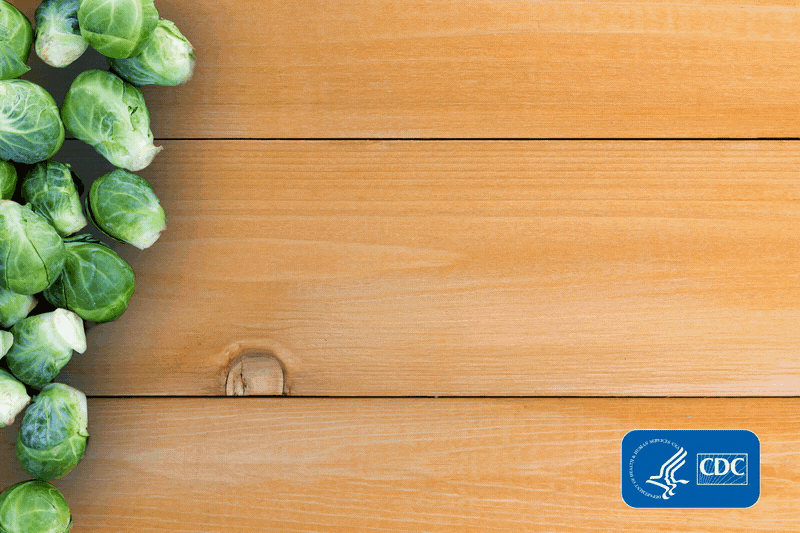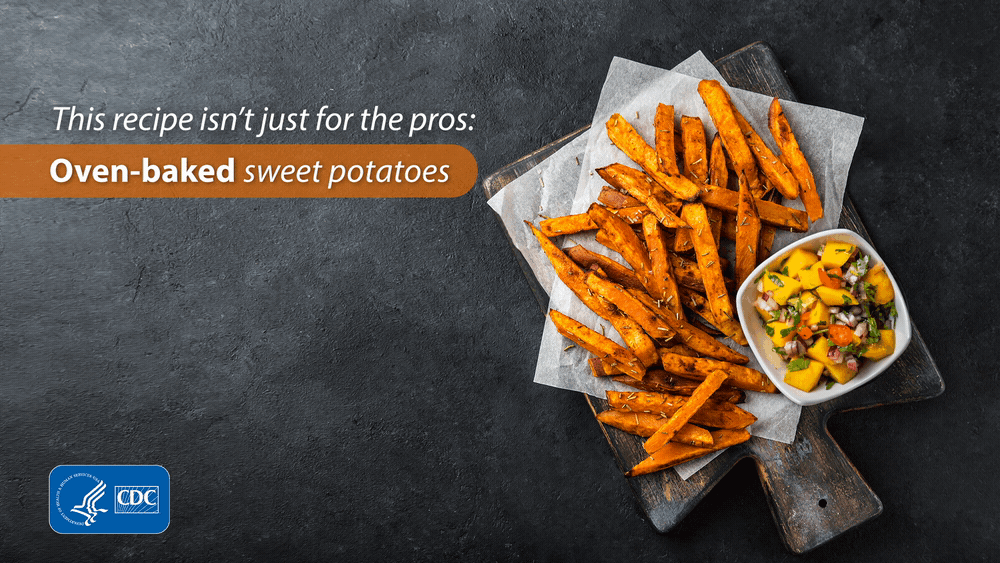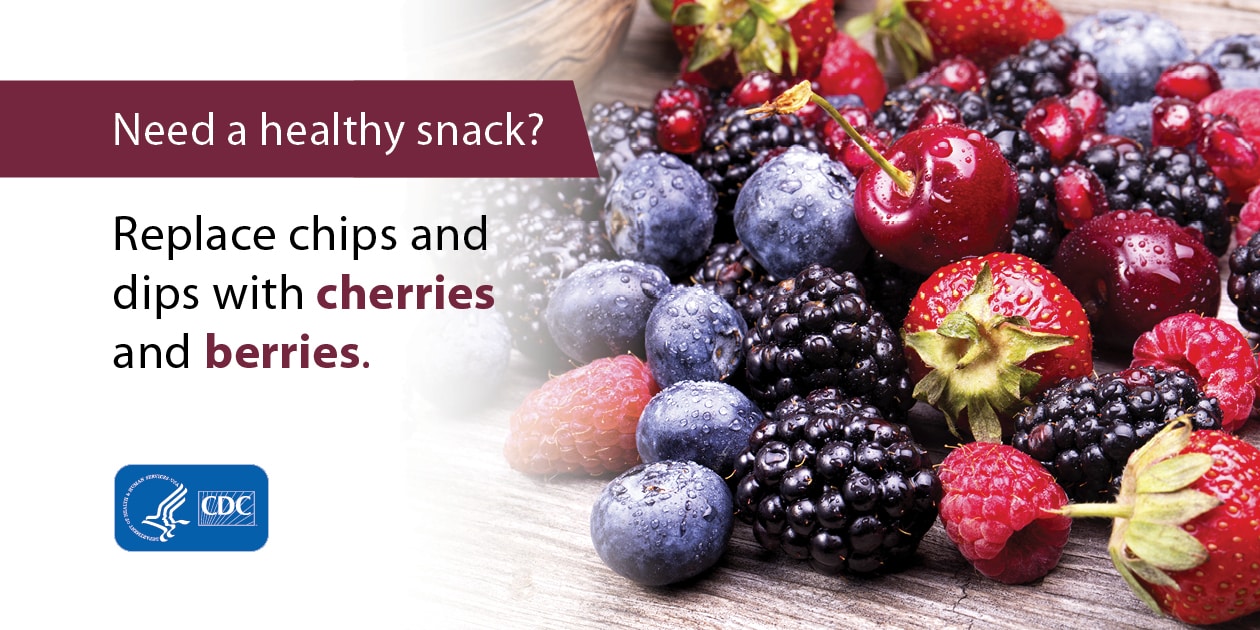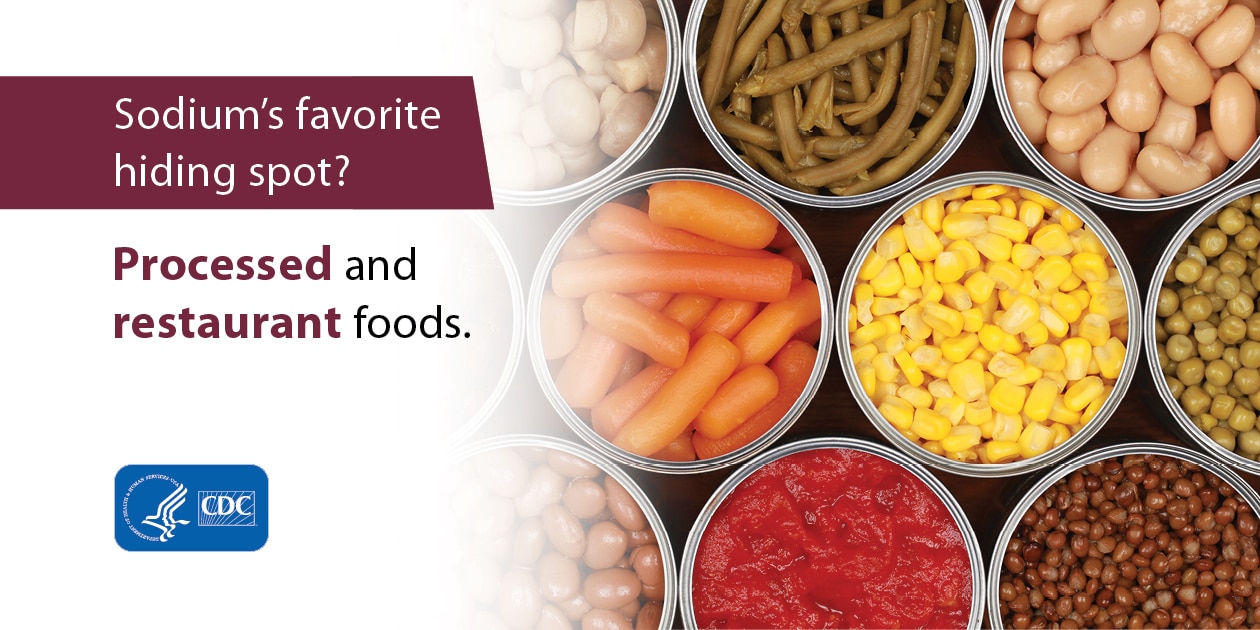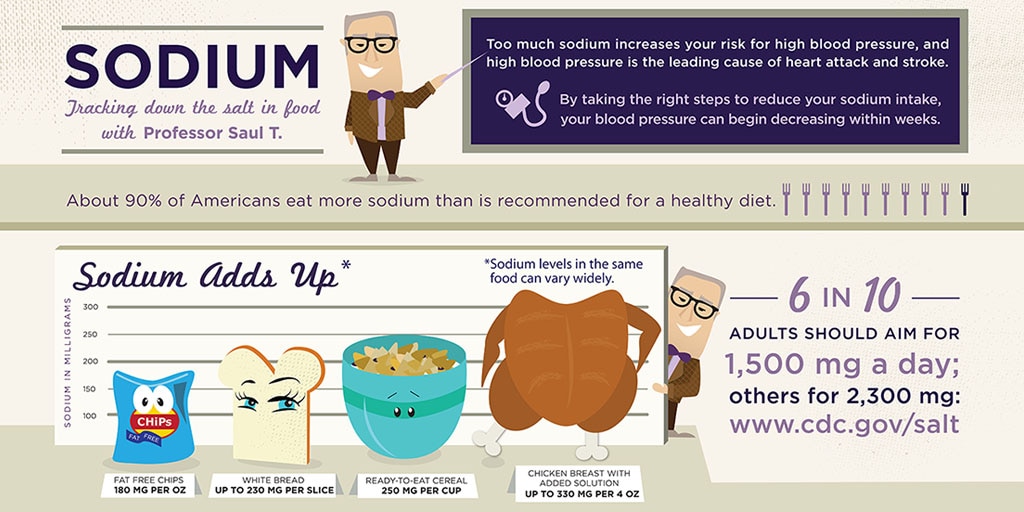Healthy Eating Communications Kit
With the support of health professionals like you, DHDSP is better able to help the public learn about the importance of healthy eating and cutting down on sodium.
The social media messages and graphics below can help encourage your audiences to take small steps to build heart-healthy eating habits. Making healthier food choices, such as lowering sodium, is one of the first steps to lowering the risk for heart disease and stroke.
Help DHDSP raise awareness by sharing these resources on your social media channels and with your colleagues.
Connect With Us
Connect with other health care professionals and share the latest in cardiovascular health from the Million Hearts® LinkedIn page.
Follow @CDCHeart_Stroke and
@MillionHeartsUS on Twitter to share our healthy eating tweets directly on your pages.
Share healthy eating posts and resources directly from Million Hearts® on Facebook.
Small food swaps can make your meals and snacks healthier. Look for opportunities throughout the day to add more fruits and vegetables to your plate. http://bit.ly/2iPRnGM
Skip the salt; keep the flavor. Replace salt with flavorful spices and herbs like thyme, rosemary, and pepper. Find a new seasoning to try on this list, and then get cooking! http://bit.ly/38yHfes
Healthy eating doesn’t have to be overwhelming. The DASH eating plan can help you create a flexible and balanced heart-healthy eating style with common foods available at the grocery store. Get started today! http://bit.ly/2x3JoP5
From savory appetizers to hearty mains, find your recipe inspiration for nutritious AND delicious cooking at @Million Hearts. http://bit.ly/2gvt84J
The salt shaker isn’t always to blame! Most of the sodium in our diets actually comes from packaged and restaurant foods. Get tips to reduce sodium at home and on the go. http://bit.ly/2JjgXSx
Did you know that the majority of #sodium in our diets actually comes from packaged and restaurant foods? Get tips from @CDCHeart_Stroke to reduce sodium at home and on the go. http://bit.ly/2JjgXSx
Small food swaps can make your meals and snacks healthier. Look for ways throughout the day to add more #fruits and #vegetables to your plate. http://bit.ly/2iPRnGM
Some of the saltiest foods don’t even taste salty. Check out the top 10 sources of #sodium in your diet—and see what you can swap! https://www.cdc.gov/salt/food.htm
The DASH eating plan can help you create a flexible and balanced #HeartHealthy eating style with common foods available at the grocery store. Get started today. @nih_nhlbi http://bit.ly/2x3JoP5
From appetizers to mains, find your #recipe inspiration for nutritious AND delicious cooking at @MillionHeartsUS. http://bit.ly/2gvt84J
Raise Awareness
| Observances | Date | Hashtag |
|---|---|---|
| American Heart Month | February 2023 | #HeartMonth |
| National Nutrition Month® | March 2023 | #NationalNutritionMonth |
| High Blood Pressure Education Month | May 2023 | |
| National Stroke Awareness Month | May 2023 | #StrokeMonth |
| National Cholesterol Education Month | September 2023 | #CholesterolEducationMonth |
Shareable Graphics
Download and share these healthy eating and sodium reduction graphics on your social media pages.

Sodium 101: Put Your Sodium Smarts to the Test
Share this quiz with your audiences to test their sodium savviness and to help them learn ways to reduce sodium!
- Recipes for a Heart-Healthy Lifestyle
Share these affordable, delicious recipes and helpful healthy eating resources. - DASH Eating Plan
This flexible and balanced eating plan from the National Heart, Lung, and Blood Institute can help your audiences create a heart-healthy eating style for life. - Healthy Eating for a Healthy Weight
Find tips for building a healthy eating plan that helps maintain a healthy weight. - MyPlate Tools
Encourage your audiences to use these tools from the U.S. Department of Agriculture to help make a healthy eating plan.
- Dietary Guidelines for Americans, 2020–2025 and Online Materials
Get tools to help audiences make healthier food and beverage choices in a variety of settings, including home, work, and play. - Sodium Reduction: Assessment to Action
Use these online tools to help food service providers take action on sodium reduction policies and practices in their own food service setting. - Health Educator’s Nutrition Toolkit: Setting the Table for Healthy Eating
This toolkit from the U.S. Food and Drug Administration is designed to help health care and nutrition professionals teach consumers about the Nutrition Facts label.
